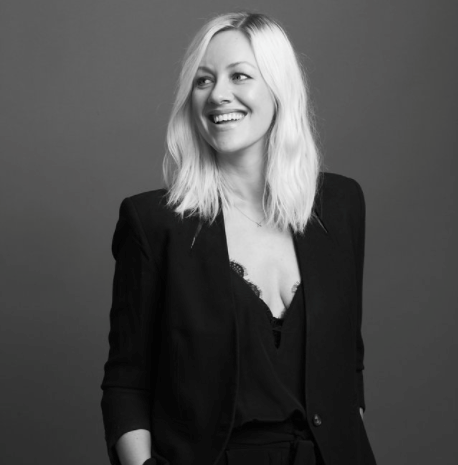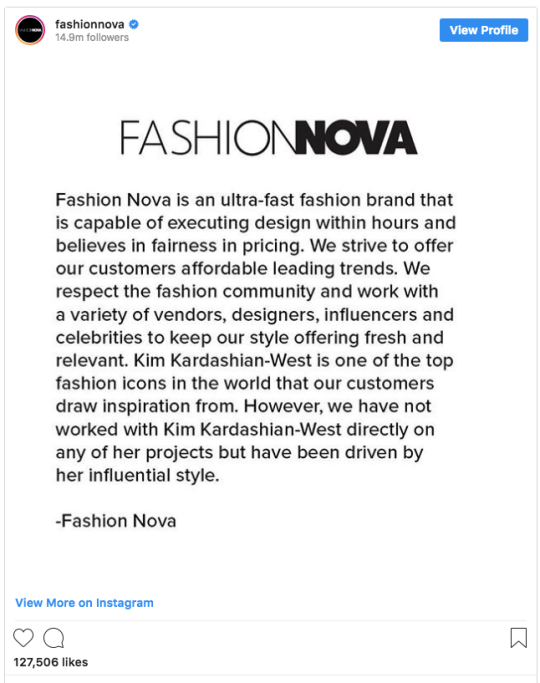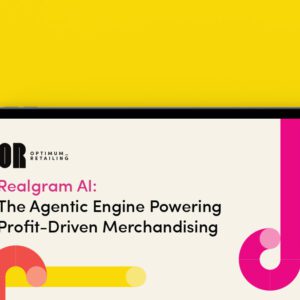By
Olivia Skuza, NuORDER

In today’s fast-paced market of “see now, wear
now”, it’s no surprise that many brands continue to capitalize on various
cultural events, particularly those featuring celebrities, to quickly design,
produce, and sell trend-driven items. The digital fashion landscape has become
a consumer’s dream of being able to see their favorite celebrity wearing
something they want, only to go shopping a mere 24 hours later and find an
almost exact replica.
Due to the speed to market for fast fashion
companies such as Zara, which can easily design and execute styles because of
their supply chain ownership, many brands are faced with the dilemma of how to
bring forth this type of speed at the retail and wholesale level.
Even brands like H&M — once the king of
fast fashion — cannot keep up with Zara, due to its ability to produce lower quantities and
therefore create higher demand. While H&M struggled with profits dropping
62% in 2017, Zara’s parent company Inditex reported a 7% increase the same
year.
Similar to Zara’s speedy capabilities, fast
fashion retailer Fashion Nova was recently accused of copying
Kim Kardashian’s one-of-a-kind Mugler dress only 24 hours after she posted
herself wearing it on Instagram. While Kardashian took to Twitter to publicly
shame fast fashion companies in general, Fashion Nova went on to Instagram to
proclaim its company mission and inspiration.

Social media has become a major influence in
creating trends. Using social media, brands can see trends emerge in real time
and can easily begin to use these signals to develop consumer insights at a
rapid pace. It’s unbelievable to think that less than two decades ago, we would
have had to wait an entire month to see what the magazines declared as the
biggest trends emerging from award shows.
While the speed to market of fast fashion can
seem completely impossible to most brands, it’s important to note the
underlying lesson toward being up to speed on trends, influencers and pop
culture when it comes to building a brand.
With all major pop culture events such as the
Oscars, Grammys and Golden Globes comes a plethora of trends that brands and
retailers can’t wait to jump on. While fast fashion retailers like Zara or
Fashion Nova have the ability to jump onto these trends within a two-week
turnaround, how are more traditional retailers and wholesalers supposed to keep
up?
With the emergence of digital wholesale
processes beginning to become the selling norm, brands must be able to think
outside of the box in order to capitalize on these opportunities for additional
business.
For example, a huge trend at recent award
shows was the emergence of pantsuits instead of gowns. As a brand, you can
immediately bring these trends to a buyer for some additional at-once business.
It’s been no secret that consumers will immediately copy their favorite
celebrity trend, and it’s a brand and store’s responsibility to act quickly to
fulfill this demand.
Being able to quickly put together some
curated items based on your current collection as a way to illustrate these
viral trends is a great way to utilize your digital wholesale process.
In addition to curating merchandise based on
current inventory, it’s not impossible to take advantage of these trends by
either injecting color, creating limited edition styles and even sketching
styles for pre-order. The process can be more streamlined and simple to
accomplish by having everything done digitally.
Another example of a trend seen recently on
the red carpet was celebrities’ support for women standing together. Many award
attendees wore pink in honor of the #metoo movement and support for women. By
injecting a new pink color to an existing style in your collection, you can
easily approach the designing process with a simple mindset of adding color as
opposed to starting from scratch.
Being able to monitor what styles are being
delivered immediately after these popular events is another way to stay one
step ahead of your competition. Ensuring you have the right styles for the
right delivery windows is another great advantage of having a digital wholesale
platform.
The main takeaway from these fast fashion
companies is to react as quickly as possible to whichever trends your brand can
personally capitalize on the most. While staying true to the authenticity of
your brand is always an element of designing, the best way to utilize this
strategy is by using technology as your main ally the same way fast fashion
retailers have.
Olivia
Skuza is a co-founder of NuORDER, a B2B e-commerce platform. NuORDER is Skuza’s third venture
and second company with her NuORDER co-founder Heath Wells. Prior to NuORDER, Skuza
and Wells were running a digital agency for premium fashion brands in Los
Angeles. They were surprised at how old-fashioned and antiquated the B2B
process still is in today’s tech-first world. The duo knew they could provide a
modern system to help bridge the gap between the B2C and B2B experience, and in
2010, they set out to change the way retailers and wholesalers transact with
NuORDER.






